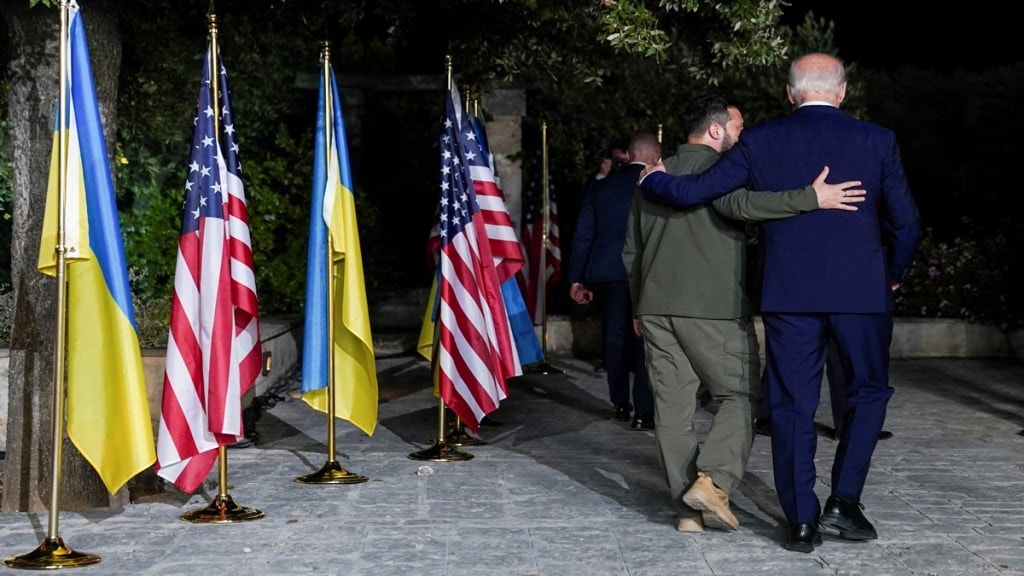President Joe Biden has approved the use of US-supplied Army Tactical Missile Systems (ATACMs) by Ukraine to target military installations deeper inside Russia. This decision, a significant shift in US policy, comes amid escalating tensions as Russian President Vladimir Putin deploys thousands of North Korean troops to bolster his forces in the ongoing war.
The move is seen as a strategic response to Ukraine’s prolonged appeals for advanced weaponry to counter Russian aggression, especially amid increasing missile and drone attacks on Ukrainian cities and energy infrastructure.
North Korean Troops in the Conflict
In a move that has alarmed the global community, Russia has positioned an estimated 12,000 North Korean troops near Ukraine’s northern border. These forces are intended to help Moscow regain territory in the Kursk region, which Ukraine has reclaimed during its recent counteroffensive.
North Korea has also reportedly supplied Russia with substantial munitions to replenish its diminishing stockpiles, intensifying the stakes in the conflict.
US Decision Amid Changing Political Landscape
The authorization of ATACMs comes after Donald Trump’s victory in the US presidential election, raising uncertainties about continued American support for Ukraine. Trump has pledged to end the war quickly, sparking concerns that his administration may prioritize a settlement favouring Russian interests.
Ukraine’s allies worry that Trump’s approach could force Kyiv to cede land to Russia, undermining its territorial sovereignty.
Zelenskyy’s Reserved Response
Ukrainian President Volodymyr Zelenskyy, who has long sought permission to use Western-supplied missiles for strikes inside Russia, was notably restrained in his response.
“Strikes are not made with words,” Zelenskyy remarked during his nightly address. “The missiles will speak for themselves.” His comment followed a devastating Russian attack on a residential building in Sumy, killing eight people, and a massive assault on Ukraine’s energy infrastructure.
Global Concerns Over Escalation
The decision has drawn mixed reactions globally. While it reflects growing frustration with Russia’s intensified aggression, concerns about escalation remain high.
Putin has warned that Moscow might supply long-range weapons to allies targeting Western interests if NATO continues to support Ukraine’s strikes inside Russia. U.N. Secretary-General António Guterres urged restraint, calling for a “fair peace” to prevent further deterioration of the conflict.
Strategic and Tactical Implications
The availability of ATACMs, though limited in number, could significantly alter the dynamics of the war. Military experts believe even a few targeted strikes inside Russia could force Moscow to divert resources and rethink its deployments.
Ukraine’s Western backers have been pressuring the U.S. to provide advanced weaponry for months. Earlier delays in supplying tanks, Patriot air defence systems, and F-16 fighter jets frustrated Kyiv but underscored Washington’s caution to avoid direct confrontation with nuclear-armed Russia.
Broader Implications for the War
The addition of North Korean troops and Biden’s decision to ease restrictions on Ukraine’s use of long-range missiles signal a potential turning point in the conflict. With the war entering its third year, both sides are ramping up efforts to tip the balance in their favour.
For Ukraine, access to longer-range missiles could be a game-changer, enabling it to disrupt Russia’s supply lines and military infrastructure far beyond the battlefield. However, the risks of further escalation and geopolitical ramifications remain significant.
As the war intensifies, the global community watches with apprehension, balancing support for Ukraine with concerns about the broader implications of the conflict spiralling further out of control.
(With AP inputs)

